The Top Shelf: Case Files 146-155: "Psycho Killer, Qu'ape Escape?"
By Mento 3 Comments
Welcome to The Top Shelf, a weekly feature wherein I sort through my extensive PS2 collection for the diamonds in the rough. My goal here is to narrow down a library of 185 games to a svelte 44: the number of spaces on my bookshelf set aside for my PS2 collection. That means a whole lot of vetting and a whole lot of science that needs to be done, ten games at a time. Be sure to check out the Case File Repository for more details and a full list of games/links!
Case File 146: Nippon Ichi Software's Makai Kingdom
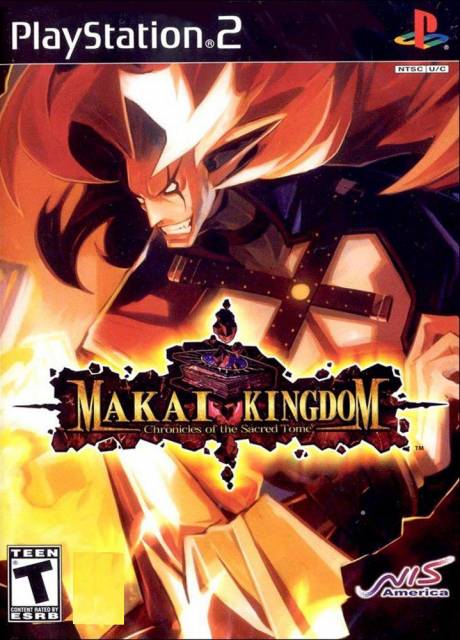
- Original Release (JP): 17/03/2005
- PS2 Exclusive!
The reason I've been vacillating about which of my stack of NIS SRPGs is my favorite is because I've never played this one. While, strictly speaking, the only sequel in NIS's PS2 output of turn-based strategy RPGs is the second Disgaea, each of them - the previously seen Phantom Brave, La Pucelle Tactics, Disgaea: Hour of Darkness, Makai Kingdom and Soul Nomad (which I don't own, so Makai's the last we'll see for this round of eliminations) - are all so similar that I probably only need the one on the shelf. Currently, that front-runner is Disgaea itself, though I can't count out Makai Kingdom without booting it up first. Set in the same universe of multiple "netherworlds" and the eccentric overlords in charge of them, Makai Kingdom follows the exploits of the extremely powerful "freakin' badass" Lord Zetta, who is shapeshifted into a book with his powers sealed away due to his own recklessness. He nonetheless has an uncanny lack for drawing a team of powerful warriors, and sets out to restore his netherworld - which was almost destroyed by the same act that forced him to become a book - and recover his original body. It's all familiar SRPG territory from a gameplay perspective, though Makai adds a few new elements in the form of vehicles, which can house multiple units and acts as a unit itself.
I got partway through Disgaea 2 and eventually burned out on NIS's RPGs, despite the fact that I also had this game waiting in the wings. After playing through most of that list above, some of them for over a hundred hours, I eventually lost my passion for SRPGs and have played very few since. What's the opposite of immersion therapy? Immersion trauma? That. Even so, it's been a long while, and Makai Kingdom's always felt like the cooler younger brother to Disgaea so I'm hoping to pencil in a few hours of gridding it up with a bunch of animes riding tanks across Hell. Considered.
Case File 147: Media Vision's Wild Arms 4
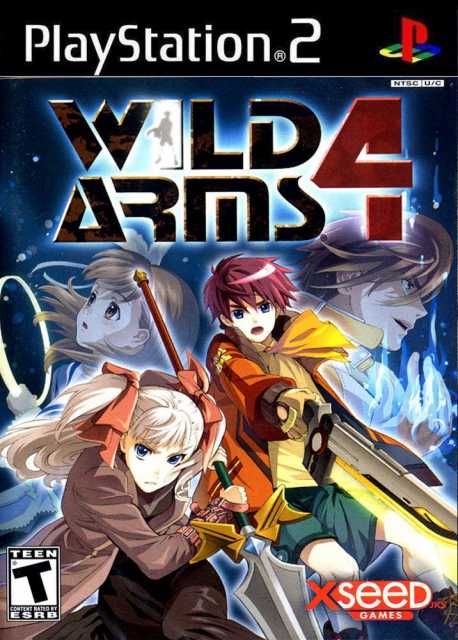
- Original Release (JP): 24/03/2005
- PS2 Exclusive!
Wild Arms 4 was a curious evolution for the series, one that will take some explanation. The previous games played around with their Wild West setting, introducing an otherwise traditional JRPG combat system of turn-based combat that factored in guns and ammo counts. You had to strategize around the fact that, inevitably, you'd need to spend an upcoming turn reloading your firearm. Beyond that mechanic and the uncommon Western setting, though, the games were standard JRPG fare. You had young heroes who wouldn't bend in the face of overwhelming evil, ancient civilizations who left their high-powered garbage around where anyone could get it, circuitous dungeons with designs that seemed purpose-built to maximize the amount of random encounters you bumped into, and so on. With Wild Arms 4, the combat took an extra step towards the tactical, almost to the extent that every boss fight became a puzzle in some way. The combat "grid" was pared down to a set of seven hexagons arranged in a circle - not unlike a six-shooter revolver barrel with a space in the center, which I'm now realizing was probably deliberate - and many of the playable characters and major foes had attacks that heavily factored in that environment. Some attacks worked at specific distances, or only affected hexes in a certain pattern, or could combine with the element affinities that would occasionally inhabit specific hexes, and often you'd need to figure out where to move to avoid an all-powerful charged attack coming your way. In addition, the game also had tactical aspects like a turn order that could be shifted around with interruptions and the like, similar to Grandia, and some Megami Tensei style shifting immunities around temporarily to withstand one-hit kills. It gets pretty complex, and you rarely see the same trick played twice. Wild Arms 4 doesn't quite stack up to Wild Arms 3 - I found the cast lacking in comparison (with the exceptions of Raquel Applegate and Gawn motherfuckin' Brawdia, and some of the bosses were fun), the story was dumb (even in JRPG terms), and the game feels far more linear and short - but I respect that they went for some puzzle-y tactical depth with the combat in such an unusual way. Also, the soundtrack is every bit as good as 3's, with my favorite being the sleazy, jazzy theme of the Nightless City, Guara Bobelo.
My preference, by a short margin, is Wild Arms 3 - I had, in fact, already sent it ahead to the shelf in a previous The Top Shelf entry. Wild Arms 4 was always going to be a dead man walking as far as this feature was concerned, but I want folk to know that the choice was not necessarily an easy one (and forget about Wild Arms 5 - limited distribution in Europe meant I never did find a cheap copy. That's one I hope to see on PSN soon, since Wild Arms 1-3 are already available). Eliminated.
Case File 148: Traveller's Tales's LEGO Star Wars
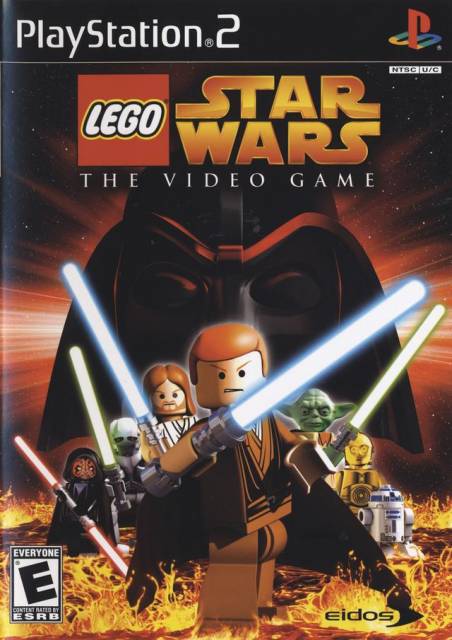
- Original Release (NA): 02/04/2005
- Not PS2 Exclusive (also out on many other systems, and rereleased in a bundle)
Hard to imagine twelve years ago that we'd see a licensed LEGO Star Wars game that was not only critically lauded but would become the blueprint for many, many similar games to follow. The original LEGO Star Wars covered the three episodes of the "prequel trilogy", a.k.a. the Space Taxes and Legislation years, and combined simple enough platforming with environmental building puzzles and a humorous, dialogue-free reimagining of the trilogy's major scenes and events. Needless to say, Traveller's Tales have been milking the format for all its worth since then. Personally, I still have some small affection for this series in part because it helped keep the 3D platformer on life support during the (hopefully ending soon) dry period when games of that genre were no longer getting made as frequently. The PlayStation 2 has a decent enough library of 3D platformers, as has been established by this feature enough times, but the next gen would make them thin on the ground but for these games and the occasional Ratchet & Clank.
I'm not progressing this game to the second round. Not because I don't like it, and not because it isn't a fine and, honestly, fairly historically important game considering what it began. Rather, there's absolutely no reason to own or display this particular version. LEGO Star Wars: The Complete Saga, which combines this game with that of its sequel (which naturally comprises of Star Wars Episodes 4-6) and graphically enhances both for the seventh generation of consoles, renders this one entirely obsolete. Eliminated.
Case File 149: Gust's Atelier Iris 2: The Azoth of Destiny
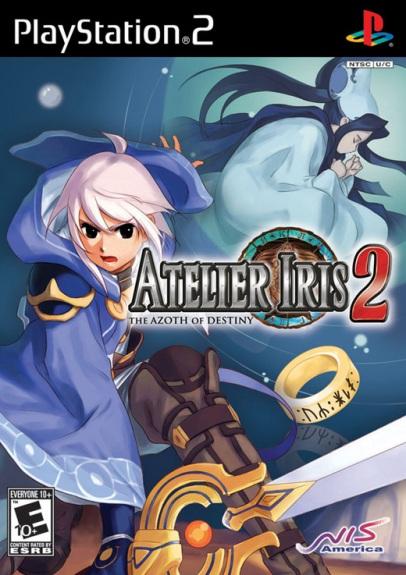
- Original Release (JP): 26/05/2005
- PS2 Exclusive!
The Atelier series began to gather speed outside of Japan during the PS3 era, when were hit by a procession of cutie anime alchemy games one after the other (Rorona, Totori, Meruru, Ayesha, etc.) to the mild bemusement of the mainstream video game critic types. Giant Bomb itself has had a long and proud history of witnessing these things coming down the review copy pipeline, shrugging, and then dropping them on Brad's desk, but in some ways I can't really blame them. It feels that, after a certain point, JRPGs started to embrace their niche comfort zones and went ever further down very specific fandom channels rather than attempt to broaden their appeal for the audience sizes the likes of Final Fantasy once drew in. The Iris games were still trying to balance the series' penchant for anime witches crowding around a cauldron with a more traditional JRPG experience, where you're going out into the world and fighting monsters and saving the day with the very same items you're crafting through alchemy. Iris 2 makes that combination all the more overt with its two primary characters: Felt, the courageous hero, and Viese, the compassionate heroine. After an incident separates the two, the former on the dangerous surface world of Belkhyde while the latter chills in the egalitarian floating continent Eden above, the game splits its focus between Felt's exploration and combat and Viese's alchemy, with both characters in close communication with one another. The idea being that Felt sends Viese all the ingredients she needs for alchemical creations, which then get sent back to Felt to assist him on the field. Some late-game events eventually disrupt this arrangement in an unexpected way, but for a while the game strikes a balance between a classic JRPG model and the more peaceful alchemy simulators the series would later develop into. So rarely does farming ingredients for item and equipment crafting take the spotlight, and because it has that increased focus the game finds various ways to make the whole process more appealing. The combat's still really good too, adopting Grandia's idea of a fluid turn order (that is to say, a turn order gauge with moving icons that represent how soon a character can act again) that can be accelerated, interrupted or reset with certain abilities.
Not only do I enjoy the game more with its dual protagonist structure - there's less running back and forth when you can switch regularly between the character doing the fighting and the one doing the alchemy - but I also feel that the game better represents what this series is all about, or at least will be all about. It's my favorite of the two Atelier Iris games I've played, and a dark horse entry for the shelf. Approved.
Case File 150: Grasshopper's Killer7
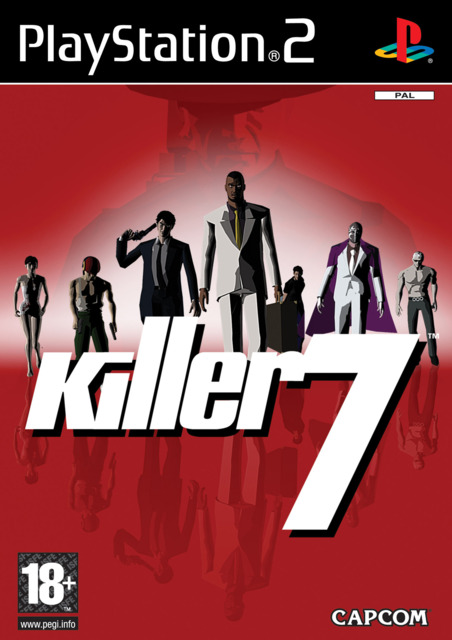
- Original Release (JP): 09/06/2005
- Not PS2 Exclusive (also out on GameCube)
Suda51's uniquely strange (there's some triple tautology for you all) assassination rail-shooter game is the sort of product you're so happy can exist, especially coming from a major publisher like Capcom, that it almost makes up for the fact that the game itself is kind of a confusing mess. The majority of the time is spent as one of the "Smiths" - a family of hitmen (and hitwoman) who apparently occupy the same body, who the player can switch between whenever one of them falls - as they make their way through corridors and rooms filled with gleefully insane, invisible suicide bombers to reach the next target they were hired to eliminate. The story's largely a framework for a series of vignettes about eccentric antagonists that one by one piece together a major conspiracy concerning relations between Japan and the US, which is also tied into the nature of the Smith gestalt and the fractured reality the player has been subjected to up until that point. There's reason behind the madness, just about, though for much of the game the player is left deliberately in the dark and expected to simply enjoy the ride - instances like a severed head who speaks largely in emotes, or the BDSM fanatic who dispenses advice while hanging from the ceiling, all create this Lynchian tableau purpose-built to discombobulate.
I tend to find that Suda51 games are often a practice of style over substance, and while Killer7 finds a survival horror edge to its on-rails FPS with its unsettling foes, I can't recall actually having a whole lot of fun with that particular side of the game. It existed to prop up everything around it, though not quite to the same extent as Deadly Premonition (which shares a lot of stylistic similarities) and its zombie survival sequences, which felt both superfluous (they weren't originally part of the game) and derivative. I'll give Killer7 credit that no single part of it closely resembled anything that had been done before, but it's still a hard game to recommend unless you've played so many games that you now prioritize distinctiveness above all else. Eliminated.
Case File 151: Double Fine's Psychonauts
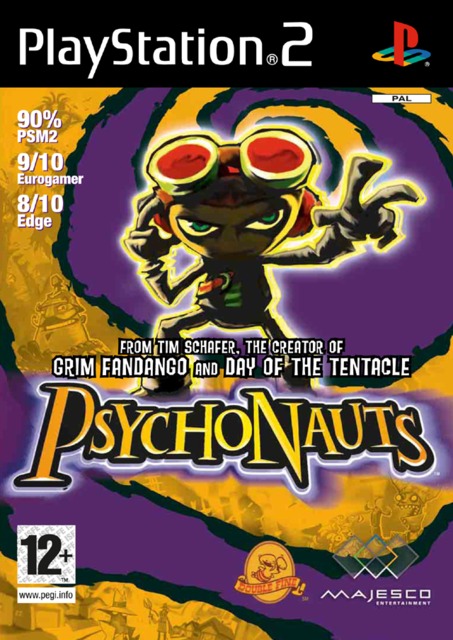
- Original Release (NA): 22/06/2005
- Not PS2 Exclusive (also out on Xbox and PC)
Double Fine's first for-real game (and the first non-adventure game Tim Schafer had a major influence on, unless you count his "Never actively tried to sabotage the project" credit for Star Wars: Shadows of the Empire) finds a union between Schafer's own pop culture-enriched comic sensibilities and a 3D platformer format that offers a little more action than his renowned point-and-click oeuvre back when he worked with LucasFilm/LucasArts, presenting the story of the young psychic Raz who sneaks his way into a summer camp intended to teach extrasensory-gifted children how to use their powers and not be controlled by them in turn. Raz's goal is to become one of the titular psychonauts - an elite team of psychic government operatives who are able to infiltrate the minds of others and either heal their psychoses or abscond with the valuable information held within. The game derives a lot of fun out of its Nickelodeon cartoon cast of bullies, outcasts and oblivious adults, merging it with 1960s/70s B-movie trappings and a subversive darker streak that tends to pop up in areas off the beaten path (like, say, a small room in the mind of the peppy instructor and psychonaut Milla Vodello that contains her repressed guilt over a past trauma). It has all the standard characteristics of the 3D platformer - copious amounts of collectibles, a trickle of new powers that increase the player's traversal and combat capabilities, some increasingly difficult jumping sections - and tempers them with some adventure game puzzle-solving, the most overt instance of which happens while Raz explores the paranoid mind of a conspiracy-obsessed milkman in one of the game's highlights. The game's masterstroke is in how each mind - which are more or less the game's "levels" - all feel so distinct and germane to the NPCs those minds belong to.
For the time being, Psychonauts is one of those games that I feel would be on the shelf were it not for the fact that its multi-platform accessibility makes it a much easier sell elsewhere. You can get the PS2 version on both PS3 and PS4 now but you can also get the enhanced Steam version Double Fine put out when publishing rights reverted to them a few years ago; with achievement support and cloud saves that might be the better alternative at this point. At any rate, while this isn't an instant Approved, it may still find its way onto the shelf via the second round's reserves list. Considered.
Case File 152: Paon/Tecmo's Trapt

- Original Release (JP): 30/06/2005
- PS2 Exclusive!
There are certain game franchises that, because each entry tends to follow a very similar pattern, your first is always going to be your favorite with the rest feeling like more of the same. Mario Kart in particular gets this a lot; while most seem to believe that, objectively speaking, Mario Kart 8 has the best mix of features, course design and difficulty balances, there'll still be those who swear by Double Dash or MK64 or even the original. I think the same is true of Tecmo's Deception series, which all follow a singular narrative thread: a young woman inherits the powers of a sinister mansion belonging to the Devil, and must figure out a way to lure poor suckers and those who seek to destroy her or her master into the mansion's traps and their painful (and occasionally humiliating) demises. Trapt is the fourth game in the series, though the first for PlayStation 2, and features a familiar story: Princess Allura is framed for her father's murder in a conspiracy to eliminate the royal family, and flees to a spooky mansion to join a spirit pact with "the Fiend" in order to enact retribution to those who would do her harm. The goal is to simply have aggressors follow you around, so you can lead them into carefully set-up rooms that will create a chain reaction of traps, some placed by the player and others inherent to the environment. Ideally, you're able to sap their entire health bar in one combo in as showy a manner as possible, as this nets you the most experience with which to buy new traps to keep the cycle of death going. Despite the game's grim and foreboding gothic countenance, not unlike a Castlevania where you're the castle's master, there's a distinct Looney Tunes quality to the way the hapless idiots you ensnare fly through the air and trip over banana skins, and it's one of those video game turnabouts that - like Dungeon Keeper - is almost cathartic in how it gives you dominion over all the nasty traps that you've run afoul of in many video games previously. It's the perfect tonic to spending five hours getting pummelled by pendulums in Dark Souls's Sen's Fortress, for example.
I don't think I can objectively rate Trapt, since it was my first Deception game and the concept was still fresh enough that I enjoyed it a lot. However, by series fans it's generally seen to be a fairly weak entry, not a patch on the original trendsetting PS1 games or the more recent Deception IV: The Nightmare Princess (an expanded version of Deception IV: Blood Ties). There's also a few series-wide issues to keep in mind also, like how the game becomes incredibly repetitive after you've seen everything once. For the time being, I think I'll stick it on fairly low down on the reserves list just in case nothing else in the second round really grabs me. Considered.
Case File 153: Nowpro/Namco's We Love Katamari
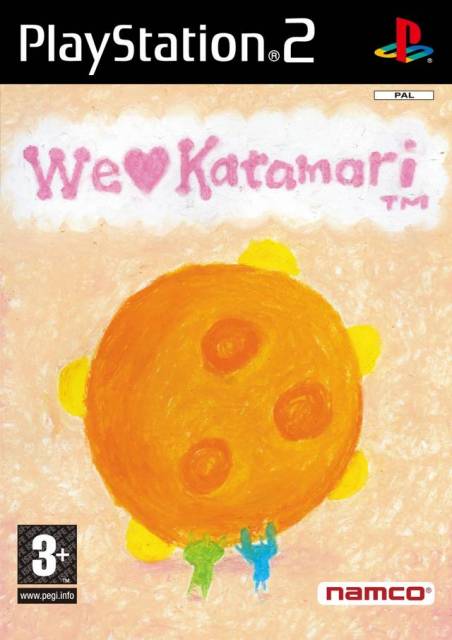
- Original Release (JP): 07/07/2005
- PS2 Exclusive
I know at least one person has wondered about the absence of Katamari Damacy on this feature (hi Jeff (no, not that Jeff)) and let me tell ya: back in 2004 I was wondering about the absence of Katamari Damacy on European store fronts too. Turns out Namco skipped over us, as they've done frequently in the past with the likes of Tales of Legendia and others. Fortunately, a bunch of someones must've written some angry/pleading letters because the sequel We Love Katamari did eventually see a European release, letting us in the Old Countries finally get their hands on Keita Takahashi's wonderfully whimsical ball-rolling action game. The goal of Katamari is simple enough: to replace the various celestial bodies that the King of All Cosmos destroyed in one of his regularly-occurring "uh-oh"s, the Prince of All Cosmos must roll a spherical "katamari" around a bunch of locations across the planet Earth in order to accrue random objects, increasing the katamari's size to celestial levels. A katamari's size is the most important characteristic while playing too: you can't roll up larger objects until you're big enough to overwhelm them, and likewise areas of the level are cordoned off until you pass a certain diameter width. What initially feels like a chaotic free-for-all as you hurriedly shove a ball around a stage filled with hundreds of items - some of which are sentient and may run away or charge you - actually boils down to a trial-and-error process of figuring out the best means of gaining mass as quickly as possible in order to land the biggest katamari when the time limit expires. We Love Katamari in particular mixes things up with some alternative goals: collecting as many expensive objects as possible, trying to roll up the largest cow- or bear-related object in a single level (the run's instantly over if you pick up any object that applies), attempting to roll up combustible objects to keep a flaming katamari lit up while avoiding anything that might douse it, and so on. It's an endlessly inventive game that has a huge collectible side-quest, so needless to say I was quite drawn to it.
As the sole European PS2 representative of the Katamari Damacy series, there isn't a need for much deliberation here. I maintain, as I believe many others do, that Katamari Damacy is one of the most important games that the PlayStation 2 era introduced to an unsuspecting world; one filled with surreal Japanese lunacy that belies a seriously-considered innovative gameplay core. Approved.
Case File 154: SCE Japan's Ape Escape 3
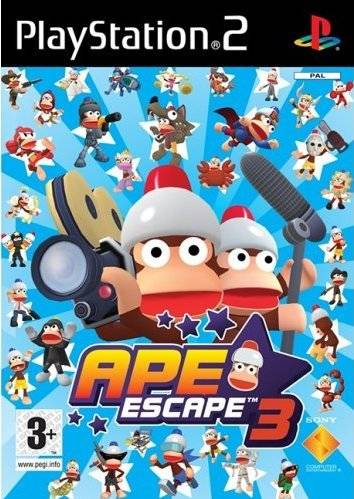
- Original Release (JP): 14/07/2005
- PS2 Exclusive!
While I appreciate that we got a third Ape Escape game, I'm not sure Sony really had enough ideas to embark on another simian snatch-fest quite so soon after the last. The big change here was that instead of taking over the world or going back through time, the apes build... a movie studio. And then the Freaky Monkey Five all get their own movies (didn't the pink one already have a TV show?) and most of the stages are themed around various movie genres. It's a fair enough idea for a continuation of the franchise, and opens the door to a lot of meta naming jokes for the localization teams to play with, but it doesn't feel quite as expansive nor had the impact that the previous game did. They pared back the amount of content you could unlock and the amount of gadgets at your disposal, and the resulting streamlining resulted in a game that just felt kinda... smaller. There's arguments to be made for a follow-up that decides to cut some of the fat and hits on a runtime that better reflects how long someone might feasibly be willing to spend catching ever-more cunning monkeys, but there's no escaping how much it feels like a step backwards. I felt the same way about Pikmin 3: it did a lot of things right, and looked incredible thanks to the Wii U's HD, but the smaller world and lack of variation in the treasures you found (which was now just fruit) was disappointing.
At any rate, I've already put Ape Escape 2 on the list of approved games, so Ape Escape 3 was already doomed. Certainly not a bad game if you're in the market for more monkey malarkey after 2, but not quite the bigger and better sequel I was hoping for. I am, however, deeply intrigued by the Metal Gear Solid parody game included within, so maybe I can figure out how to turn that into a side entry for this feature. Eliminated.
Case File 155: Tecmo's Project Zero III: The Tormented
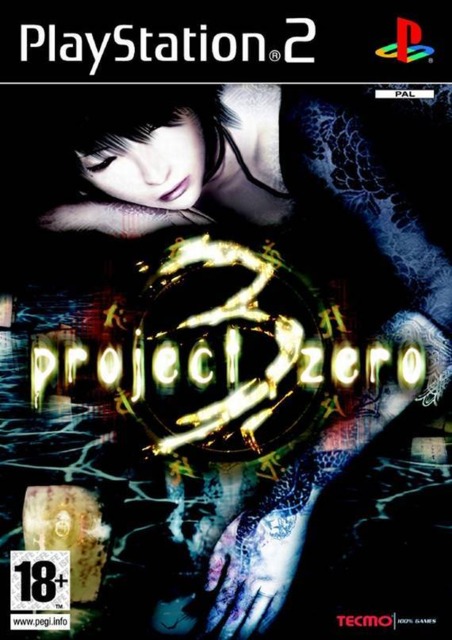
- Original Release (JP): 28/07/2005
- PS2 Exclusive!
Project Zero 3, or Fatal Frame 3, is a perfectly acceptable entry in Tecmo's suspenseful spook photography horror survival series that nonetheless can't quite stack up to the "twins in peril" second game. It's really a pacing issue: the player, as one of three unlucky paranormal investigators who get caught by a curse that traps them in a twilight mansion in their dreams, progresses through the game in "stages", rather than the contiguous exploration of the previous two games. The player researches during the day in their sterile and safe (for a time) home office, and tries to survive the night as they seek answers in the dream mansion itself. As always, it's the victim of a botched ritual that's responsible for the malice spreading out, and it takes all three characters - including the first game's protagonist and a relative of the second game's twins - working together to get to the bottom of it. What this often means is that the player must re-enter the mansion at the same place night after night, just with a slightly different selection of doors that are open or locked. The game thrives on its repetition, prompting the player to find out what's different each time they begin a new night, using what they learned in their waking hours to make progress. It doesn't actually result in a better game, unfortunately, and I hear this repetition was also the problem with the fifth game in the series too (that would be Maiden of Black Water, which I've been meaning to get around to since it's free-to-start and all). It's a shame in a lot of ways, because I think the third one might also be the most terrifying: nothing prepared me for having to deal with enemies while navigating a crawlspace, and the combination of the narrow tunnels and a ghost attack (who of course doesn't have to worry about walls) was some next-level perturbing shit.
Stop me if you've heard this one before, but we've already progressed the superlative Project Zero 2 to the shelf already so hopes weren't high for this sequel to also make it. For a series that could already be painfully dependent on backtracking and key puzzles, the new game progression design choices made for 3 didn't really help in that regard. Yet at the same time it has so much to offer in the way of creatively frightening set-pieces that I hope I haven't scared anyone away, so to speak, from trying it. Eliminated.
Results
It's that time again where we collate together those entering the second round and commiserate those that have left us early for the storage bins of regret. That's probably a bit harsh. Storage bins of adequacy, let's say. Half of this week's games were eliminations, including three sequels to games that have already been approved. I don't know what it is about lesser third games for the PlayStation 2, but there's a growing trend here that I'm going to tentatively dub the "Empire Strikes Back Rule".
Before we move onto the usual statistics, it's time to touch base with another "honorable mention": PS2 games I've rented or previously owned that, for obvious reasons, can't be added to the shelf despite their quality. This week's entry is Sony Santa Monica Studio's God of War (first released in North America in March 2005), an attempt to westernize the burgeoning "character action" sub-genre that began with the likes of Capcom's Onimusha and Devil May Cry. It pits a very angry man against a horde of Greek monsters and a labyrinth's worth of elaborate environmental puzzles. The game turned some heads with its brutal violence and gratuitous nudity, presenting a new variation on some classic mythological foes that was a bit more gritty and comic-book-like (in the McFarlane/Liefeld sense, at least). It has a legion of fans and detractors alike and is currently enjoying a fresh boost of relevancy due to an upcoming reboot that puts an older and more grizzled Kratos up against a whole new pantheon of supercilious jerks to mow down.
At any rate, we have added three more "considered" entries to the pile, increasing the second round's purview to an even 60 out of the 155 games we've seen so far. In an unusually magnanimous move, we also have two new shelf buddies to bring that total up to fifteen, which means just over a third of the total shelf space available is now accounted for. Next week will see The Top Shelf push through most of the rest of 2005 and continue to observe this bizarre trend of weaker third entries, as well as a few other questionable purchases to ruminate on. Don't worry, however, as we also have one of the PS2's most beautiful games to highlight as well. See you then.
